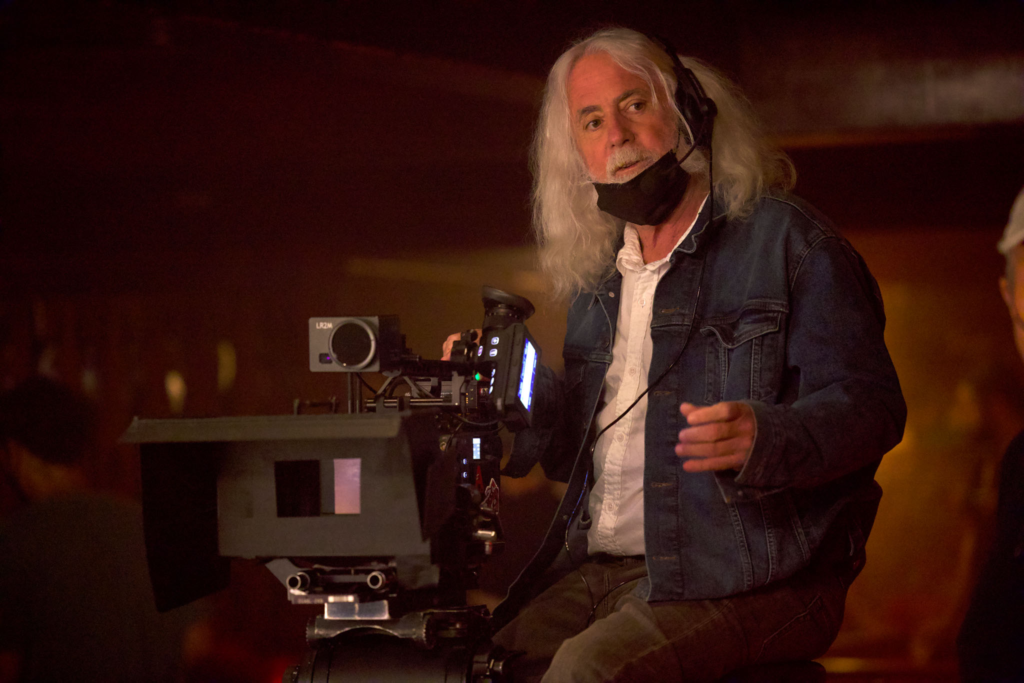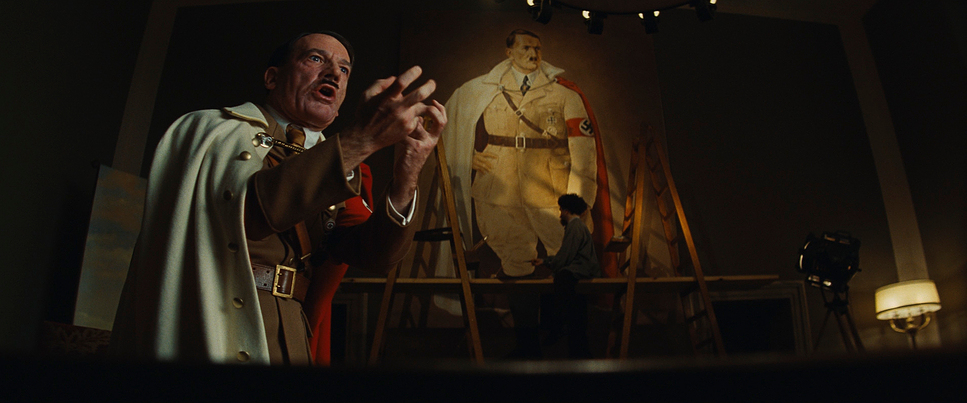One of my favorite films to dissect from a cinematographic perspective is Quentin Tarantino’s Inglourious Basterds. This masterpiece is not just a narrative triumph but also a visual symphony orchestrated by the legendary Robert Richardson. Let me share my thoughts on the artistry that makes this film visually unforgettable.
Cinematography Analysis Of Inglourious Basterds
About the Cinematographer

The visual genius behind Inglourious Basterds is Robert Richardson, a three-time Oscar-winning cinematographer with an impressive filmography. Richardson’s collaborations with auteurs like Martin Scorsese, Oliver Stone, and Quentin Tarantino have solidified his reputation as one of the greats in the industry. His work is defined by a blend of classical Hollywood aesthetics and bold, experimental flourishes, a combination that shines brightly in this film.
What I admire most about Richardson is his ability to marry thematic depth with visual innovation. In Inglourious Basterds, his approach is immersive and multilayered, often using light and composition to evoke emotion, establish power dynamics, and guide the viewer’s focus. Every scene feels like a carefully crafted painting, full of details that enhance the story’s complexity.
Inspiration for the Cinematography

It’s clear that Tarantino’s love for classic cinema deeply influenced the film’s visual language, and Richardson masterfully brings those inspirations to life. The works of Sergio Leone, known for their dynamic close-ups and tension-filled compositions, are particularly evident. For example, in the opening farmhouse scene, the lingering close-ups on characters’ faces build unease, much like Leone’s spaghetti Westerns.
Another significant influence is German Expressionist cinema. The stark contrasts and dramatic shadows in key scenes, such as the tense interrogation at the farmhouse or Shosanna’s cinema sequences, pay homage to this visual style. What I find fascinating is how these elements of classic cinema are blended with Richardson’s modern sensibilities to create a look that feels both nostalgic and fresh.
Camera Movements

One of the most striking aspects of the cinematography in Inglourious Basterds is the deliberate use of camera movement to reflect the film’s emotional beats. Richardson employs a mix of static framing, smooth tracking shots, and occasional handheld work to great effect.
In the opening scene, the camera starts with wide, sweeping shots of the serene French countryside, gradually tightening into oppressive close-ups as Hans Landa’s true intentions surface. This transition mirrors the growing tension, pulling the viewer into the characters’ psychological turmoil.
The tavern scene in La Louisiane is another standout moment. Here, the camera acts almost like an eavesdropper, circling the table and zooming in on subtle shifts in characters’ expressions. This observational style creates an unbearable tension that culminates in explosive violence.
In contrast, the chaos of the cinema-burning climax is captured with frenetic handheld movements. These moments of dynamism feel jarring and visceral, underscoring the disorder and destruction unfolding on screen.
Compositions

Richardson’s compositions in Inglourious Basterds are a masterclass in visual storytelling. Each frame is meticulously crafted to convey character relationships, emotions, and power dynamics.
One example is the frequent use of low angles to emphasize Hans Landa’s dominance. In the farmhouse scene, he towers over the farmer, visually reinforcing his authority and menacing presence. Conversely, Shosanna is often framed in high-angle shots during her moments of vulnerability, such as her encounter with Landa at the restaurant.
The symmetry in Shosanna’s cinema sequences contrasts sharply with the asymmetry in scenes involving the Basterds. This juxtaposition visually reflects the film’s broader themes of order versus chaos, revenge versus justice. What I find particularly intriguing is how the compositions subtly shift within scenes to mirror the characters’ changing dynamics, keeping the audience visually engaged.
Lighting Style

Lighting in Inglourious Basterds is one of the film’s most defining visual features. Richardson’s use of light ranges from naturalistic to theatrical, adapting to the tone of each scene.
In the opening scene, soft natural light bathes the farmhouse, creating an idyllic and deceptive calm that contrasts with the darkness of the events to come. As Landa’s interrogation grows more sinister, the lighting subtly darkens, reflecting the shift in mood.
Shosanna’s cinema is illuminated with a warm, golden glow, evoking nostalgia and the glamour of old Hollywood. This is contrasted with the cold, stark lighting in Nazi settings, highlighting the divide between oppressors and victims. My favorite lighting moment is the iconic shot of Shosanna’s face projected onto the smoke, a haunting and poetic visual that symbolizes her vengeance consuming the Nazi regime.
Lensing and Blocking

Richardson’s lens choices and blocking techniques are integral to the film’s visual storytelling. Wide-angle lenses are frequently used, especially in outdoor scenes like the farmhouse sequence, to create a sense of vastness and isolation. These same lenses are employed in close quarters, such as the tavern, to heighten the intensity and claustrophobia.
Blocking, or the placement of actors within the frame, is another area where Richardson excels. One standout example is the restaurant scene with Shosanna and Landa. Shosanna’s constrained body language and positioning in the frame reflect her inner turmoil and lack of control, while Landa’s relaxed dominance fills the remaining space, emphasizing his power.
Color Grading

The color grading in Inglourious Basterds plays a subtle yet impactful role in defining the film’s tone. Warm, nostalgic tones dominate Shosanna’s scenes, evoking both her romantic past and the tragedy of her revenge. In contrast, the Nazi settings are often bathed in cooler, desaturated hues, underscoring their sterile, calculated menace.
One of the most visually arresting moments is the climax at Shosanna’s cinema, where vibrant reds dominate the palette. These reds symbolize bloodshed, vengeance, and the fiery destruction of the Nazi regime, creating a visceral and emotional impact that stays with the viewer long after the credits roll.
Technical Aspects
From a technical perspective, Inglourious Basterds is a triumph. Richardson’s choice to shoot on 35mm film adds a tactile, grainy texture that enhances the period authenticity. The use of anamorphic lenses gives the film its epic scope, while the precise sound design complements the visuals beautifully.
Tarantino’s music choices, from Ennio Morricone-inspired scores to David Bowie’s “Cat People,” further elevate the cinematography. The music often acts as an emotional counterpoint, adding layers of irony or tension that enrich the visual storytelling.
Conclusion
For me, the cinematography of Inglourious Basterds is a perfect example of how visuals can elevate storytelling. Robert Richardson’s ability to blend classical influences with modern techniques results in a film that feels both timeless and innovative. Every choice, from the lighting to the lensing, serves to enhance the narrative’s emotional resonance and thematic complexity.
As a filmmaker and colorist, Inglourious Basterds remains a source of inspiration. It’s a reminder of the power of cinematography to not just support a story but to become a story in itself.